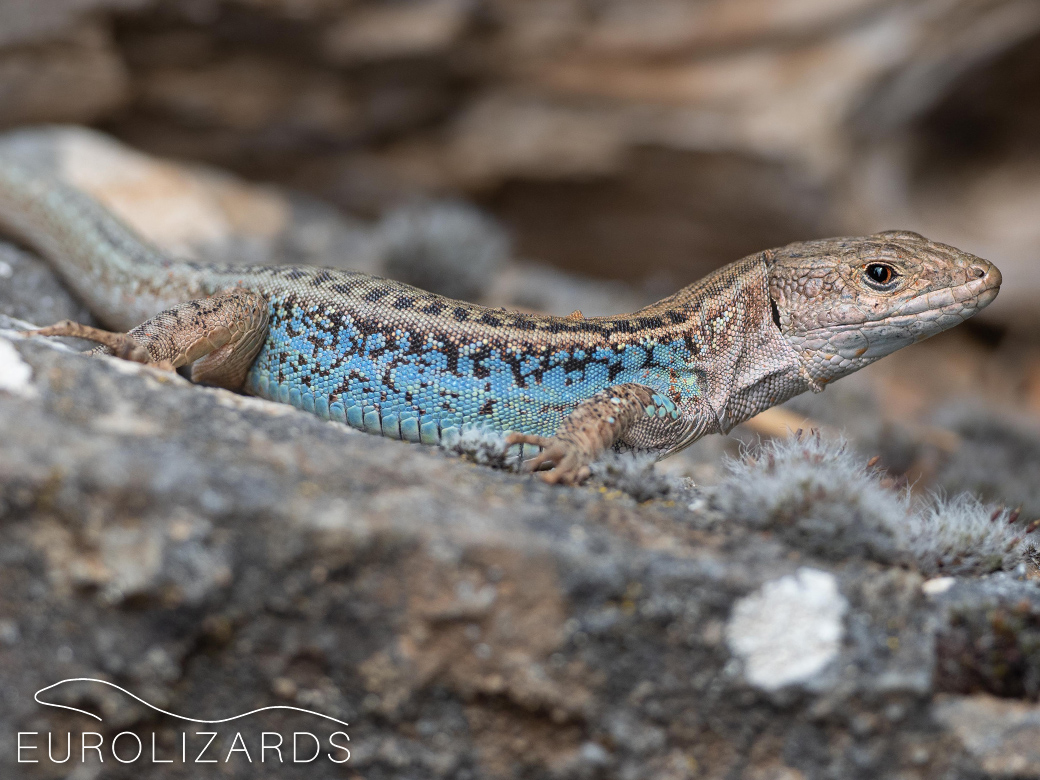Podarcis thais - Eastern Peloponnese Wall Lizard

Podarcis thais, which formerly has been regarded as a subspecies of Podarcis peloponnesiacus, has been put into species rank in 2021 (Kiourtsoglou, A., Kaliontzopoulou, A., Poursanidis, D., Jablonski, D., Lymberakis, P., & Poulakakis, N. (2021). Evidence of cryptic diversity in Podarcis peloponnesiacus and re-evaluation of its current taxonomy; insights from genetic, morphological, and ecological data. Journal of Zoological Systematics and Evolutionary Research, 00, 1–21.)
We do not know why such a beautiful lizard has been named after an antique prostitute (Thaïs was a so called Hetaera). Howbeit: this colorful species can be real stunners in spring.
The distribution range of this lizard covers the eastern Peloponnese (Korinthia, Argolis, Arcadia and Lakonia prefectures). It seems to be geographically separated some 1.7 million years ago from Podarcis pelopopnnesiacus with the mountain ranges of Parnon, Mainalo, Olygirtos and Killini as natural barriers (see the putative distribution map).
However, in the Stymphalia and Feneos area, there seems to be a small overlap where both species co-occur, but apparently, they do not interbreed.
Within the contact zone, distinguishing between Podarcis peloponnesiacus and Podarcis thais by field character may be tricky and sometimes impossible.

From our point of view, males of Podarcis peloponnesiacus and Podarcis thais differ by the following field characters, although these are not diagnostic:
|
Podarcis thais |
Podarcis peloponnesiacus |
|
Extensive blue coloration on the flanks - actually, this seems to be the most reliable field character |
Only some well-defined blue shoulder spots |
|
Frequently with broad dark supra-dorsolateral stripes |
Supra-dorsolateral stripes often weak or interrupted |
|
Throat orange or white |
Throat orange or yellow |
|
No green coloration on back |
May have greenish backs or green dorsolateral stripes |
|
Tail may be blue or green |
Tail brownish / greyish |
In south of its range, concolor morphs frequently seem to occur.
For separation of Podarcis thais from other Podarcis species on Peloponnese, see criteria at Podarcis peloponnesiacus.










EUROLIZARDS - The Home of European Lizards! © Birgit & Peter Oefinger
